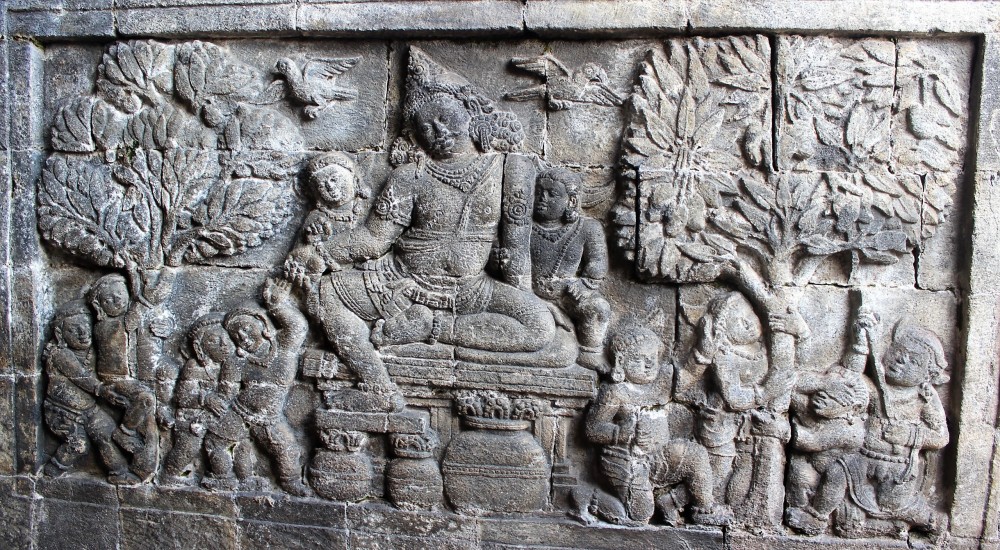A visit to Borobudur is incomplete without visiting Candi Mendut and Chandi Pawon. The three are grouped as the Borobudur Temple Compounds. And that’s what we did.
The Borobudur Temple Compounds consist of three monuments: namely the Borobudur Temple and two smaller temples situatued to the east on a straight axis to Borobudur. The two temples are Mendut Temple, whose depiction of Buddha is represented by a formidable monolith accompanied by two Bodhisattvas, and Pawon Temple, a smaller temple whose inner space does not reveal which deity might have been the object of worship. Those three monuments represent phases in the attainment of Nirvana.
https://whc.unesco.org/en/list/592
h
Candi Mendut
Chronologically, mendut is the oldest of the three. The stairs leading to the main temple is quite steep. Inside the temple are seated three huge deities. One is Buddha Sakyauni in ‘Dharmachakra Mudra’. On either side of him are Avalokiteshvara and Vajrapani.



On the outer walls along the steep stair, we find carvings of Jataka tales.



A few more from the temple –


Even to this day, Mendut is used as a religious temple. When Buddhist pilgrims visit Borobudur, they always visit Mendut first. They then walk to the nearby temple Pawon and end their pilgrimage with a climb to the top of Borobudur. While Mendut is not as famous as its bigger cousin, Borobudur, it still stands strong as one of the greatest Buddhist temples on ancient Java. https://www.worldsiteguides.com/asia/indonesia/mendut/ Candi Pawan
Candi Pawon
Between Mendut and Borobudur stands Pawon temple, a jewel of Javanese temple architecture. Most probably, this temple served to purify the mind prior to ascending Borobudur.
https://en.m.wikipedia.org/wiki/Pawon




My admiration for these architectural wonders is rekindled after this post… Every temple that I visited, every sculpture that I watched awe struck… is well preserved not only in my gadget, but in my memory too. I know these medieval temples would call me back..

